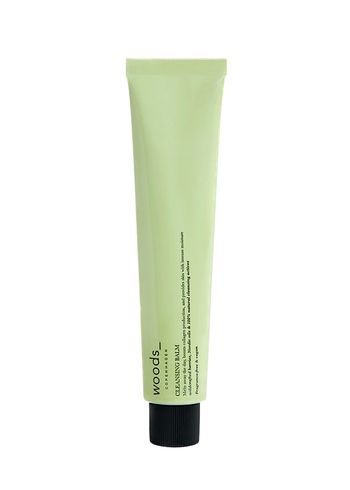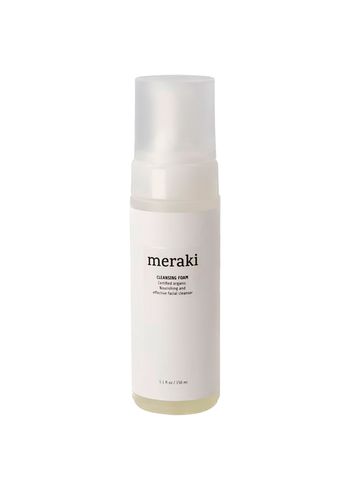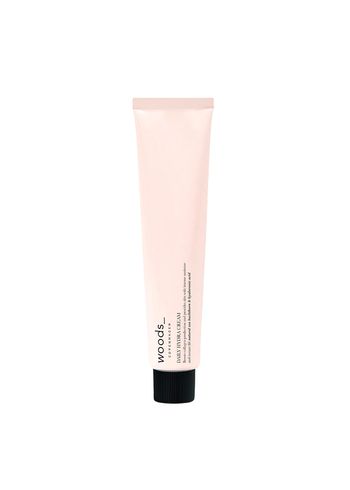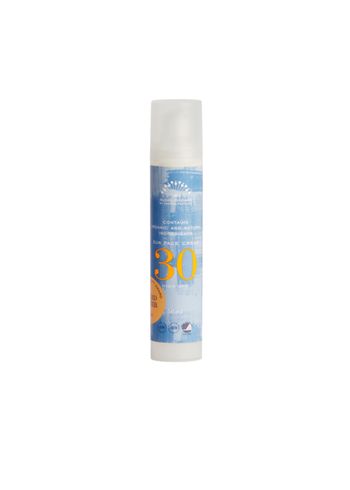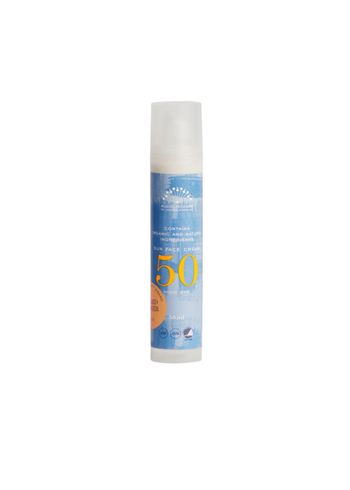
Skin Care Guide

Cleanse
Day / Night
Cleansing your skin is not just the first step but also one of the most important steps in your skincare routine. It ensures that you cleanse the skin to help products penetrate better while removing excess products and dead skin cells.
Morning // In the morning, you can cleanse your face with a gentle cleanser to prepare your skin for the rest of your routine. Be cautious about using cleansers with too many active ingredients that exfoliate, as this can make your skin more vulnerable to UV rays and pollution throughout the day.
Evening // In the evening, you can opt for a cleanser with more active ingredients that have time to work overnight. Since your skin gets to rest and isn’t covered with makeup afterward, it’s healthier to use an exfoliating cleanser in the evening rather than during the day.
Application // The type of cleanser you use also determines how you should cleanse your face. A good rule of thumb is always to massage your cleanser into your face for about 2 minutes. Pay special attention to the areas around your nose, eyebrows, and under the jawline, as makeup and dirt often accumulate in these areas.

Serum
Night
There is a whole world of different serums tailored to address any skin concern. This makes it easy to find a serum that suits your skin, whether you need extra hydration, are battling acne, or dealing with fine lines.
Night // Many of the active ingredients in serums are concentrated and provide deep, targeted effects. This makes them ideal for application at night, allowing them to penetrate the skin and work optimally overnight. During the night, your skin regenerates and produces new skin cells, giving the serum an opportunity to enhance the new skin.
Application // Most serums need to be applied according to the specific product instructions, and due to the many active ingredients, you should be mindful of which ingredients should not be used together. When applying, use a moderate amount of serum in your hands and gently press it into damp skin. This helps the serum absorb more easily and avoids pulling too much on your skin.

Cream
Day / Night
No matter your skin type, moisturizing your skin is absolutely essential. Even if you have oily or greasy skin, it’s important to hydrate to prevent your skin from overproducing oil and sebum. Keeping your skin moisturized helps strengthen its barrier, protecting it from pollution and fine lines.
Day // Use a moisturizing cream that suits your skin type. It sounds simple, but consider how the cream leaves your skin feeling. If you tend to get oily or greasy throughout the day, opt for a day cream with a light mattifying effect. Conversely, if your skin usually becomes dry and irritated, choose a thicker cream. Make sure it feels comfortable on your skin and works well under makeup.
Night // In the evening, you can give your skin an extra hydration boost. A rich cream is ideal at night since it won’t interfere with your sleep. If you’ve applied a serum beforehand, it’s crucial to "lock in" the serum with a cream. This helps the serum penetrate better and creates a barrier between the serum and the air, preventing it from drying out and ensuring it reaches its full potential.
Application // Use a generous amount of cream, approximately the size of a coin, and gently massage it into your skin. Many people apply their cream by pulling at the skin, which can contribute to the formation of fine lines and wrinkles, especially under the eyes. Apply gently and make sure to cover your entire face. A great tip is to use any leftover cream on your fingers for your neck and hands.

UV Protection
Day
Many may think sunscreen is only necessary in the summer, but even in the cold winter months, sunscreen should be part of your daily skincare routine. Even when the sun is low in the sky, your skin is exposed to both UVA and UVB rays. UVA rays contribute to skin aging and the formation of pigmentation spots, also known as sunspots. UVB rays are the most harmful, as they damage the skin and increase the risk of skin cancer.
Day // Even if you’ve used gentle products in your morning routine, your skin is still more vulnerable to the sun after cleansing. This makes incorporating SPF into your routine essential. At a minimum, your sunscreen should have SPF 30, but ideally, SPF 50 is the best choice for protecting your skin against both UVA and UVB rays. While you might associate sunscreen with greasy creams that leave a white cast, there are facial sunscreens available with lightweight, moisturizing formulas that feel comfortable on your skin. However, be cautious about relying solely on a foundation or day cream claiming to have SPF, as their protective effects are often diluted and less effective.
Application // When it comes to UV protection, more is more. The best tip for applying the optimal amount of sunscreen is to draw a thick line of sunscreen on four fingers. This might seem like a lot, but it’s important to ensure the sunscreen is applied all the way to your hairline and down your neck as well.

Face Mask
Night
Similar to serums, face masks are perfect for addressing specific skin concerns. The active ingredients in masks are often even more concentrated than those in serums, making them incredibly effective. There’s a wide range of face masks available, including clay masks, sheet masks, gel masks, and creams—each with their unique properties.
Night // There isn’t necessarily a "better" time to apply a face mask, but as mentioned, using highly concentrated ingredients in the evening can be advantageous, allowing them to work overnight. Most face masks are used 1-2 times a week, though this can vary depending on the product.
Application // The application method varies greatly depending on the type of mask. If you’re using a clay or gel mask, it can be beneficial to cleanse your face again with a mild cleanser. For sheet masks, which are often soaked in a serum, you can massage the remaining serum into your face and let it work overnight.

Lips
Day / Night
Most of us already have a favorite lip balm that loyally stays in our bag. Lips are actually one of the only areas on the face that don’t produce their own oil or sebum to moisturize the skin. This makes them one of the most common places to experience dryness. A good lip balm helps prevent cracked lips, but many types can actually worsen their moisture level. Avoid lip balms with a high water content, as they can dry out your lips even more.
Day // Preferences for lip balms are highly individual, and with the wide range available today, it’s easy to find a moisturizing lip balm to suit your taste. Just as you should use sunscreen daily, it’s a good idea to look for a lip balm with SPF. Your lips are equally exposed to the sun’s rays, and because the skin on your lips is thinner than the rest of your face, they’re actually more vulnerable than you might think.

Active Ingredients for Different Skin Types
Skin has varying needs depending on its type and condition, which is why it’s important to choose skincare ingredients that suit your skin type. Dry and sensitive skin requires ingredients that soothe and hydrate, while oily and blemish-prone skin needs ingredients that regulate oil production and treat impurities. Understanding your skin type and its needs is the first step toward an effective skincare routine.
Dry and Sensitive Skin
Dry and sensitive skin often feels tight, itchy, or irritated and may have visible dry patches or redness. It can react negatively to temperature changes or products with harsh ingredients. The skin barrier is often weakened, making it more susceptible to external irritants and moisture loss.
Hyaluronic Acid: Increases the skin's hydration by binding water to it and preventing moisture loss.
Glycerin: An effective humectant that enhances the skin's defense and elasticity.
Niacinamide: A water-soluble form of vitamin B3 that improves skin elasticity, reduces redness, and strengthens the skin barrier.
Ceramides: Strengthen the skin's protective lipid barrier, helping to prevent moisture loss and protect against irritation.
Oils (e.g., squalane or jojoba oil): Nourish the skin and provide emollient properties without clogging pores.
Oily and Blemish-Prone Skin
Oily and blemish-prone skin is characterized by a shiny appearance, especially in the T-zone (forehead, nose, chin), often accompanied by clogged pores, pimples, and blackheads. This skin type produces more sebum than necessary, leading to breakouts and an uneven texture.
Salicylic Acid: A BHA (beta-hydroxy acid) that penetrates deep into the pores, cleanses them, prevents blemishes, and gently exfoliates.
Retinol (Vitamin A): Reduces sebum production, promotes cell renewal, and minimizes breakouts and uneven texture.
Niacinamide: Regulates sebum production, reduces inflammation, and improves skin texture.
Aloe Vera: Offers soothing and cooling properties as well as hydration without adding grease.
Zinc: Soothes redness and irritation while regulating sebum production to minimize oily skin.

